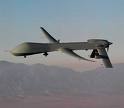Cyber war on US drones? Another spy craft crash, now in Seychelles


With America still scrambling to explain why and how they lost a drone aircraft over Iran last week, the Pentagon is trying to make sense of how another high-tech unmanned spy craft crashed Tuesday morning in the Seychelles.
For the second time in two weeks, American authorities lost contact with a drone aircraft, this time resulting in a fiery crash in the Seychelles in the Indian Ocean. The United States has operated an Air Force base there since 2009 to dispatch drones for use in anti-piracy missions and to patrol the skies over Somalia and elsewhere.
Officials at the US embassy in Mauritius confirmed the crash onTuesday morning, revealing that an MQ-9, or “Reaper” drone, had landed at Seychelles International Airport, citing mechanical issues.
A week earlier, the Department of Defense denied losing a drone, only for Iran authorities to in turn publish video proof of an American craft that they have recovered. The Pentagon later admitted that they lost contact with the drone while allegedly flying it over Afghanistan, prompting President Obama to ask Tehran to return the spy plane. Iranian President Mahmoud Ahmadinejad has shot down Obama’s plea, however, telling Venezuelan state television this week, “The Americans have perhaps decided to give us this spy plane. We now have control of this plane.” Ahmadinejad added that Iranian authorities are able to make sense of the craft’s complex technical system, perhaps providing a crucial addition to Iran’s arsenal as tensions between Tehran and Washington intensify over a budding nuclear program overseas.
The Department of Defense has remained relatively mum on the exact capabilities of the lost craft, although insiders insist that the drone in question can sniff out chemicals in the sky and intercept cell phone transmissions miles in the sky while remaining undetected.
The loss of the second drone within days raises questions about security within the US military and the unmanned crafts themselves. It was reported earlier this year that drones dispatched from Creech Air Force Base in Nevada were plagued with a computer virus that made its way into the cockpits of the crafts without American authorities able to quickly identify it. Even though US military officials claimed that the virus didn’t harm the security of US aircraft, it is suspicious that now two American drones have been downed in only such a short amount of time, raising questions whether it is possible retaliation from Iran for an alleged cyber attack the year prior. Stuxnet, a 2010 computer warm that targeted Iranian nuclear facilities, was suspected to be perpetrated by American intelligence agencies, much to their dismissal.
In the case of the down drone over Seychelles, authorities say that government officials of the island nation were “immediately notified” and are coordinating an effort with the United States to arrange for “the removal of debris,” says the US Air Force. Pending further investigation, the US Air Force released a statement on Tuesday saying that “It has been confirmed that this drone was unarmed and its failure was due to mechanical reasons.”
Editor Gervais Henrie of the local Le Seychellois Hebdo tells the Washington Post that the craft burst into blames upon crashing, describing the wreckage in a phone interview as charred and “totally destroyed.”
The MQ-9 Reaper has the capability of launching laser-guided bombs and air-to-ground missiles, although the DoD says the craft in question was not armed and no injuries resulted in the crash.
This is a birds eye report of the Seychelles military threat to America

